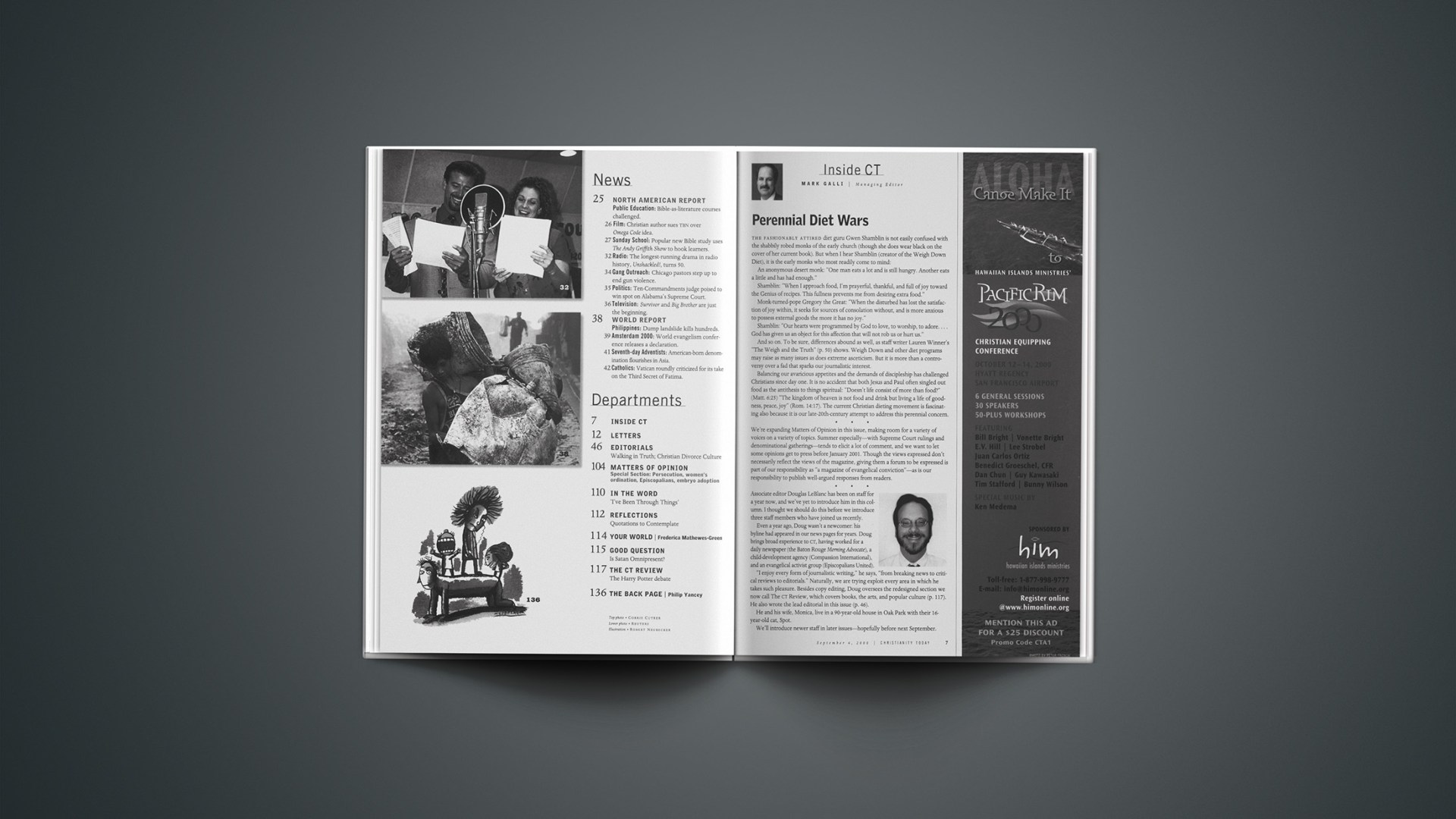The fashionably attired diet guru Gwen Shamblin is not easily confused with the shabbily robed monks of the early church (though she does wear black on the cover of her current book). But when I hear Shamblin (creator of the Weigh Down Diet), it is the early monks who most readily come to mind:An anonymous desert monk: “One man eats a lot and is still hungry. Another eats a little and has had enough.”Shamblin: “When I approach food, I’m prayerful, thankful, and full of joy toward the Genius of recipes. This fullness prevents me from desiring extra food.”Monk-turned-pope Gregory the Great: “When the disturbed has lost the satisfaction of joy within, it seeks for sources of consolation without, and is more anxious to possess external goods the more it has no joy.”Shamblin: “Our hearts were programmed by God to love, to worship, to adore. … God has given us an object for this affection that will not rob us or hurt us.”And so on. To be sure, differences abound as well, as staff writer Lauren Winner’s “The Weigh and the Truth” (p. 50) shows. Weigh Down and other diet programs may raise as many issues as does extreme asceticism. But it is more than a controversy over a fad that sparks our journalistic interest.Balancing our avaricious appetites and the demands of discipleship has challenged Christians since day one. It is no accident that both Jesus and Paul often singled out food as the antithesis to things spiritual: “Doesn’t life consist of more than food?” (Matthew 6:25) “The kingdom of heaven is not food and drink but living a life of goodness, peace, joy” (Romans 14:17). The current Christian dieting movement is fascinating also because it is our late-20th-century attempt to address this perennial concern.• • •We’re expanding Matters of Opinion in this issue, making room for a variety of voices on a variety of topics. Summer especially—with Supreme Court rulings and denominational gatherings—tends to elicit a lot of comment, and we want to let some opinions get to press before January 2001. Though the views expressed don’t necessarily reflect the views of the magazine, giving them a forum to be expressed is part of our responsibility as “a magazine of evangelical conviction”—as is our responsibility to publish well-argued responses from readers.• • • Associate editor Douglas LeBlanc has been on staff for a year now, and we’ve yet to introduce him in this column. I thought we should do this before we introduce three staff members who have joined us recently.Even a year ago, Doug wasn’t a newcomer: his byline had appeared in our news pages for years. Doug brings broad experience to CT, having worked for a daily newspaper (the Baton Rouge Morning Advocate), a child-development agency (Compassion International), and an evangelical activist group (Episcopalians United).”I enjoy every form of journalistic writing,” he says, “from breaking news to critical reviews to editorials.” Naturally, we are trying exploit every area in which he takes such pleasure. Besides copy editing, Doug oversees the redesigned section we now call The CT Review, which covers books, the arts, and popular culture (p. 117). He also wrote the lead editorial in this issue (p. 46). He and his wife, Monica, live in a 90-year-old house in Oak Park with their 16-year-old cat, Spot. We’ll introduce newer staff in later issues—hopefully before next September.
Copyright © 2000 Christianity Today. Click for reprint information.










